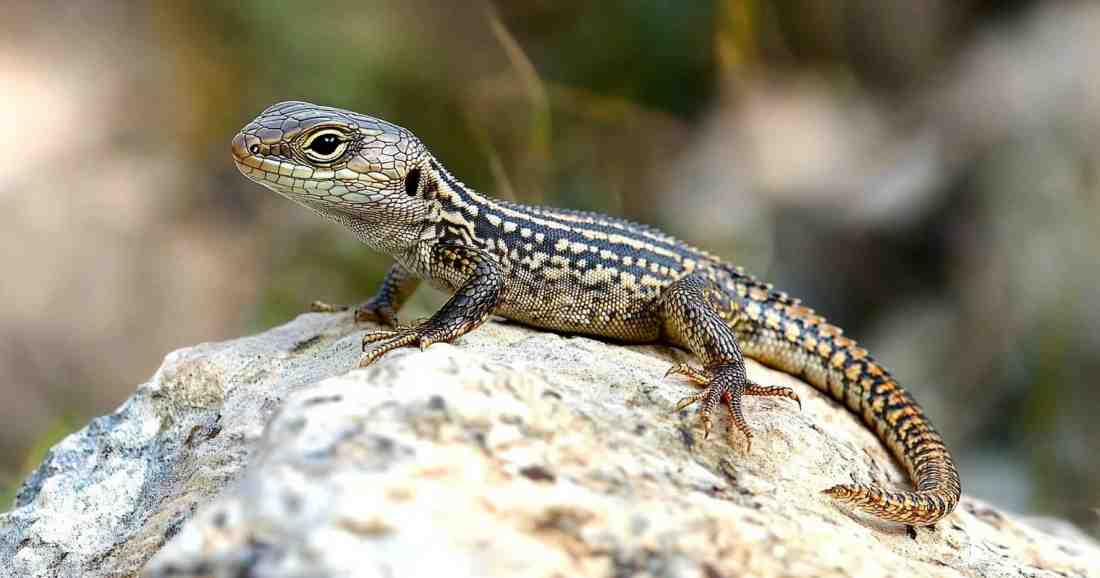
Lizard Quiz – Test Your Knowledge of These Incredible Reptiles! Darting across sun-soaked rocks, blending seamlessly into their surroundings, or even gliding through the air—lizards are some of the most diverse and adaptable creatures on Earth. With over 7,000 species found in deserts, jungles, and even urban environments, these cold-blooded animals have evolved extraordinary survival tactics, from regenerating lost tails to spitting venom. But how much do you really know about these fascinating reptiles? Take our Lizard Quiz and put your reptile knowledge to the test!
Lizards belong to the reptile family, alongside snakes, turtles, and crocodiles. Unlike their legless cousins, most lizards have strong limbs, allowing them to sprint, climb, and even run across water. Some species, like the chameleon, have independently moving eyes and prehensile tails, while others, like the basilisk lizard, can “walk” on water to escape predators. Found on every continent except Antarctica, lizards have survived for millions of years by developing specialized adaptations suited to their environments. From the scorching deserts of Australia to the dense rainforests of South America, these resilient creatures have conquered almost every habitat on the planet.
Lizards: The Masters of Adaptation
Lizards also play a vital role in the ecosystem, controlling insect populations and serving as prey for larger predators. Some species are venomous, like the Gila monster and beaded lizard, while others rely on lightning-fast reflexes and camouflage to avoid being eaten. Whether it’s the frilled lizard using its dramatic neck flare to scare off enemies or the gecko’s sticky feet allowing it to scale smooth surfaces, lizards have perfected the art of survival.
Mind-Blowing Lizard Facts That Might Surprise You
🦎 Some Lizards Can Regrow Their Tails – Many lizards use autotomy, a survival strategy where they detach their tails when grabbed by a predator, allowing them to escape while the detached tail continues to twitch.
🦎 The Komodo Dragon Can Smell Prey from Miles Away – The world’s largest lizard uses its forked tongue to detect chemical signals in the air, tracking wounded prey with deadly accuracy.
🦎 Not All Lizards Lay Eggs – While many reptiles are egg-layers, some lizards, like the blue-tongued skink, give birth to live young!
🦎 The Draco Lizard Can Glide Through the Air – This “flying dragon” lizard has elongated ribs covered with skin flaps that act like wings, allowing it to glide between trees in the forests of Southeast Asia.
🦎 Chameleons Don’t Just Change Color for Camouflage – Contrary to popular belief, chameleons primarily change color to communicate with other lizards, regulate their body temperature, and express emotions.
Lizards in Culture, Mythology, and Conservation
Lizards have fascinated humans for centuries, appearing in folklore, myths, and even religious symbolism. In many cultures, they are seen as symbols of renewal due to their ability to shed skin and regrow limbs. In ancient Egypt, lizards were associated with good fortune, while in Mesoamerican cultures, some deities were depicted as lizard-like figures.
Today, lizards face new challenges due to habitat destruction, climate change, and the illegal pet trade. Many species, including the charismatic green iguana and the critically endangered Fiji banded iguana, are under threat. Conservation efforts are crucial in ensuring these remarkable reptiles continue to thrive in the wild.
Are You Ready to Take the Ultimate Lizard Quiz?
Whether you’re a reptile enthusiast, a nature lover, or just fascinated by these cold-blooded survivors, this Lizard Quiz is for you! From giant monitor lizards to tiny geckos, this quiz will challenge what you think you know about these incredible creatures.
So, are you ready to test your knowledge and see if you’re a true reptile expert? Take the Lizard Quiz now and find out! 🦎🌿
